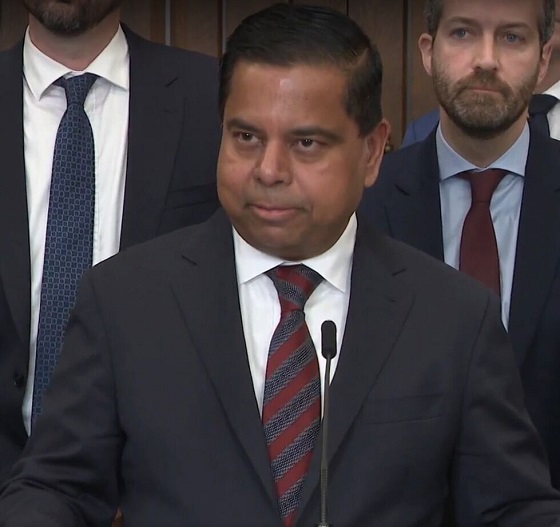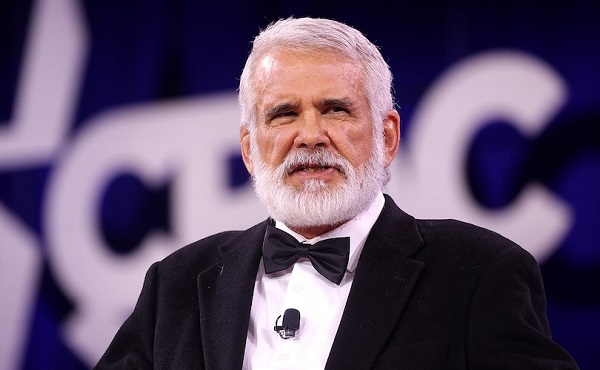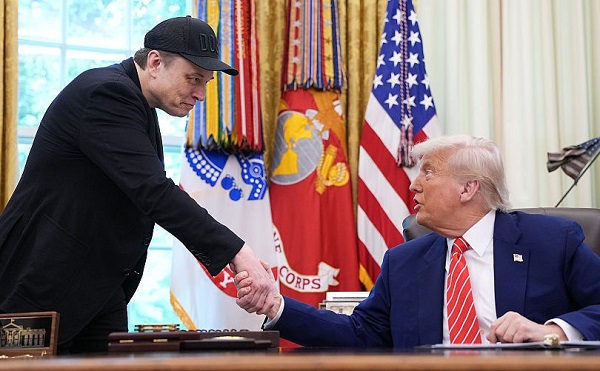Energy
How to realize Canada’s ambitions as an energy superpower

From Resource Works
If Prime Minister Mark Carney is to make good on his promise to make Canada an energy superpower that includes oil and gas, Alberta and B.C. will clearly need to be in the vanguard. But how can Canada accomplish energy superpower status in an era of energy transition and decarbonization — with its attendant promise of peak oil and gas — increasingly strained relations with Canada’s biggest energy trade partner — the U.S. — and domestic regulatory strangulation that has soured Canada’s investment climate? These were some of the topics explored Tuesday morning at the Global Energy Show Canada in Calgary, which organizers said was expected to draw 30,000 attendees. Briefly, the answer to these challenges is that the U.S. will remain a key partner in energy trade, despite Donald Trump’s best efforts to sour U.S.-Canada relations, global demand for oil and gas will continue to grow, and Canada just needs to get out of its own way through deregulation.”There is no peak in oil demand on the horizon,” said Haitham al Ghais, former secretary-general for OPEC. As for liquefied natural gas, Shell Canada president Stastia West said Shell is forecasting 60% growth in demand for LNG, with B.C. now poised to become a significant player. Should all proposed LNG projects and expansions in B.C. get financed, by 2030, Canada will have joined the ranks of a major players in the LNG sector.
B.C.’s two large LNG projects — LNG Canada and Ksi Lisims — and three smaller ones (Cedar, Woodfibre and Tilbury) would produce about 47.5 million tonnes per annum (MTPA). That represents about 28% of the 170 million MPTA of new LNG supply expected to come onto markets by 2030, according to Shell’s 2025 LNG outlook. Despite its raw energy abundance, Canada is emerging from a decade of self-doubt and squelched investment opportunities, driven in no small part by the notion that oil and gas is a sunset industry.

A global push for an energy transition presumed that the demand for conventional energy would decline. But as a number of speakers noted Tuesday, the role of renewable energy in the “energy transition” is turning out to be additive, not subtractive. Investment in renewables will continue to gain momentum, but not at the expense of conventional oil and gas. “We are not in an era of energy transition — we are in an era of energy addition,” said Clay Sell of X-Energy, a small modular reactor developer. All forms of energy will need to grow, he said, to meet the growing demand for energy. AI alone promises to be a huge new driver of energy demand.
Just four years ago, the International Energy Agency (IEA) pronounced that no new major investments in oil and gas development would be needed, based on net-zero commitments made by Paris Agreement signatories. Al Ghais said OPEC members had noted “serious concern” with the IEA’s “flip-flopping” in its forecasts, noting that, in recent months, the IEA’s executive director “once again stressed the importance of oil industry investments.” “We forecast that global primary energy demand is going to increase by a staggering 24% from now to 2050,” all Ghais said, adding that oil is expected to remain 30% of the energy mix in 2050. “Simply put, ladies and gentlemen, there is no peak in oil demand on the horizon,” al Ghais said. “The fact that oil demand keeps rising, hitting new records year on year, is a clear example. Our projections are that oil demand will surpass 120 million barrels a day by 2050.” He said cumulative investments in the oil sector are expected to total US$17.4 trillion between now and 2050. He added Alberta is well poised to meet some of that demand with lower emission oil, thanks to its leadership in carbon capture and storage.
“Innovation will be critical in assisting this industry in reducing greenhouse gas emissions going forward,” he said. “Canada has been at the forefront of carbon capture utilization and storage. “Alberta specifically is a global leader in harnessing this technology, and the province has extensive energy infrastructure and subsurface geological storage for CCUS.” Gaining and holding market share in a growing market is one of the big challenges for Canada. Its closest energy trade partner has become increasingly hostile, with U.S. President Donald Trump claiming the U.S. does not need Canadian oil and gas. Given that about 90% of Canada’s oil and gas exports currently go to the U.S, that could be a problem — if it were true.

Jon McKenzie, CEO of Cenovus Energy, said Canada should try to diversify Canada’s energy markets, but said it also needs to preserve its relations with the U.S. The two countries are simply too integrated to sever ties. “The reality is we are hard-wired into the U.S. system,” McKenzie said. “What we really need to do is be the adult in the room as these discussions continue. Because President Trump says he doesn’t need Canadian oil and gas, that doesn’t make it true. They need our oil and gas as much today as they have over the prior decades.” And increasingly, other countries will need Canadian oil and gas as well, underscoring the need for export infrastructure, like pipelines.B.C. is well-positioned to capture the Asia market for natural gas through LNG exports.
This summer, Canada will begin exporting LNG to Asia, as LNG Canada in Kitimat is commissioned. Shell’s 2025 LNG outlook notes investment in various natural gas infrastructure in India and China — new connections to the gas grid, regasification facilities and LNG fueling for heavy duty trucking — are driving demand growth for natural gas. While the outlook forecasts demand for LNG in Europe, Japan and South Korea will peak around 2035 and begin to decline, it forecasts demand growth in China, India and other parts of Asia, as well as growth overall in the marine sector through fuel switching. “Our view of demand growth is up to 60% by 2040,” said Stastia West, Canadian president and country chair of Shell Canada.
The billion-dollar question on many minds in B.C. is whether the partners in LNG Canada will pull the trigger on a final investment decision for a Phase 2 expansion, and whether the Ksi Lisims LNG project north of Prince Rupert will be approved and financed. Shell is one of the five partners in LNG Canada. Asked what the timelines might be for an FID on Phase 2, West said that decision depends on competitiveness, affordability and “stakeholder needs.”
“At the end of the day, for us at Shell…it will depend on how that decision fits into the portfolio of opportunities that we have ahead of us to make decisions on at the time. But I think we’re excited about the opportunity, and we’re happy with how all of that is progressing.”
While there has been an encouraging vibe shift in Canada for the oil and gas sectors, barriers to investment in energy remain. Some of the barriers cited Tuesday include Bill C-69, oil and gas emissions caps, a West Coast oil tanker ban, and provincial opposition to new oil and gas pipelines. Lisa Baiton, CEO of the Canadian Association of Petroleum Producers (CAPP), offered a prescription for regulatory bottlenecks. “Let’s get out of our own way here in Canada,” she said.
Alberta
Alberta Premier Danielle Smith Discusses Moving Energy Forward at the Global Energy Show in Calgary

From Energy Now
At the energy conference in Calgary, Alberta Premier Danielle Smith pressed the case for building infrastructure to move provincial products to international markets, via a transportation and energy corridor to British Columbia.
“The anchor tenant for this corridor must be a 42-inch pipeline, moving one million incremental barrels of oil to those global markets. And we can’t stop there,” she told the audience.
The premier reiterated her support for new pipelines north to Grays Bay in Nunavut, east to Churchill, Man., and potentially a new version of Energy East.
The discussion comes as Prime Minister Mark Carney and his government are assembling a list of major projects of national interest to fast-track for approval.
Carney has also pledged to establish a major project review office that would issue decisions within two years, instead of five.
Alberta
Punishing Alberta Oil Production: The Divisive Effect of Policies For Carney’s “Decarbonized Oil”

From Energy Now
By Ron Wallace
The federal government has doubled down on its commitment to “responsibly produced oil and gas”. These terms are apparently carefully crafted to maintain federal policies for Net Zero. These policies include a Canadian emissions cap, tanker bans and a clean electricity mandate.
Following meetings in Saskatoon in early June between Prime Minister Mark Carney and Canadian provincial and territorial leaders, the federal government expressed renewed interest in the completion of new oil pipelines to reduce reliance on oil exports to the USA while providing better access to foreign markets. However Carney, while suggesting that there is “real potential” for such projects nonetheless qualified that support as being limited to projects that would “decarbonize” Canadian oil, apparently those that would employ carbon capture technologies. While the meeting did not result in a final list of potential projects, Alberta Premier Danielle Smith said that this approach would constitute a “grand bargain” whereby new pipelines to increase oil exports could help fund decarbonization efforts. But is that true and what are the implications for the Albertan and Canadian economies?
The federal government has doubled down on its commitment to “responsibly produced oil and gas”. These terms are apparently carefully crafted to maintain federal policies for Net Zero. These policies include a Canadian emissions cap, tanker bans and a clean electricity mandate. Many would consider that Canadians, especially Albertans, should be wary of these largely undefined announcements in which Ottawa proposes solely to determine projects that are “in the national interest.”
The federal government has tabled legislation designed to address these challenges with Bill C-5: An Act to enact the Free Trade and Labour Mobility Act and the Building Canada Act (the One Canadian Economy Act). Rather than replacing controversial, and challenged, legislation like the Impact Assessment Act, the Carney government proposes to add more legislation designed to accelerate and streamline regulatory approvals for energy and infrastructure projects. However, only those projects that Ottawa designates as being in the national interest would be approved. While clearer, shorter regulatory timelines and the restoration of the Major Projects Office are also proposed, Bill C-5 is to be superimposed over a crippling regulatory base.
It remains to be seen if this attempt will restore a much-diminished Canadian Can-Do spirit for economic development by encouraging much-needed, indeed essential interprovincial teamwork across shared jurisdictions. While the Act’s proposed single approval process could provide for expedited review timelines, a complex web of regulatory processes will remain in place requiring much enhanced interagency and interprovincial coordination. Given Canada’s much-diminished record for regulatory and policy clarity will this legislation be enough to persuade the corporate and international capital community to consider Canada as a prime investment destination?
As with all complex matters the devil always lurks in the details. Notably, these federal initiatives arrive at a time when the Carney government is facing ever-more pressing geopolitical, energy security and economic concerns. The Organization for Economic Co-operation and Development predicts that Canada’s economy will grow by a dismal one per cent in 2025 and 1.1 per cent in 2026 – this at a time when the global economy is predicted to grow by 2.9 per cent.
It should come as no surprise that Carney’s recent musing about the “real potential” for decarbonized oil pipelines have sparked debate. The undefined term “decarbonized”, is clearly aimed directly at western Canadian oil production as part of Ottawa’s broader strategy to achieve national emissions commitments using costly carbon capture and storage (CCS) projects whose economic viability at scale has been questioned. What might this mean for western Canadian oil producers?
The Alberta Oil sands presently account for about 58% of Canada’s total oil output. Data from December 2023 show Alberta producing a record 4.53 million barrels per day (MMb/d) as major oil export pipelines including Trans Mountain, Keystone and the Enbridge Mainline operate at high levels of capacity. Meanwhile, in 2023 eastern Canada imported on average about 490,000 barrels of crude oil per day (bpd) at a cost estimated at CAD $19.5 billion. These seaborne shipments to major refineries (like New Brunswick’s Irving Refinery in Saint John) rely on imported oil by tanker with crude oil deliveries to New Brunswick averaging around 263,000 barrels per day. In 2023 the estimated total cost to Canada for imported crude oil was $19.5 billion with oil imports arriving from the United States (72.4%), Nigeria (12.9%), and Saudi Arabia (10.7%). Since 1988, marine terminals along the St. Lawrence have seen imports of foreign oil valued at more than $228 billion while the Irving Oil refinery imported $136 billion from 1988 to 2020.
What are the policy and cost implication of Carney’s call for the “decarbonization” of western Canadian produced, oil? It implies that western Canadian “decarbonized” oil would have to be produced and transported to competitive world markets under a material regulatory and financial burden. Meanwhile, eastern Canadian refiners would be allowed to import oil from the USA and offshore jurisdictions free from any comparable regulatory burdens. This policy would penalize, and makes less competitive, Canadian producers while rewarding offshore sources. A federal regulatory requirement to decarbonize western Canadian crude oil production without imposing similar restrictions on imported oil would render the One Canadian Economy Act moot and create two market realities in Canada – one that favours imports and that discourages, or at very least threatens the competitiveness of, Canadian oil export production.
Ron Wallace is a former Member of the National Energy Board.
-

 Business2 days ago
Business2 days agoJustice Centre launches new petition: Keep cash legal and accessible. Stop Bill C-2
-

 Health1 day ago
Health1 day agoRFK Jr. appoints Robert Malone, Martin Kulldorff, other COVID shot critics to overhauled CDC vaccine panel
-

 Alberta1 day ago
Alberta1 day agoOil prices are headed for a hard fall
-

 Business2 days ago
Business2 days agoAudit report reveals Canada’s controversial COVID travel app violated multiple rules
-

 Business1 day ago
Business1 day agoOur addiction to dairy supply management is turning Canada into a trade pariah
-

 International2 days ago
International2 days agoElon Musk expresses ‘regret’ over attacks on Trump that ‘went too far’
-

 Business24 hours ago
Business24 hours agoThe carbon tax’s last stand – and what comes after
-

 illegal immigration2 days ago
illegal immigration2 days agoProtesters violate LA curfew, Homeland Security rams suspect’s car





